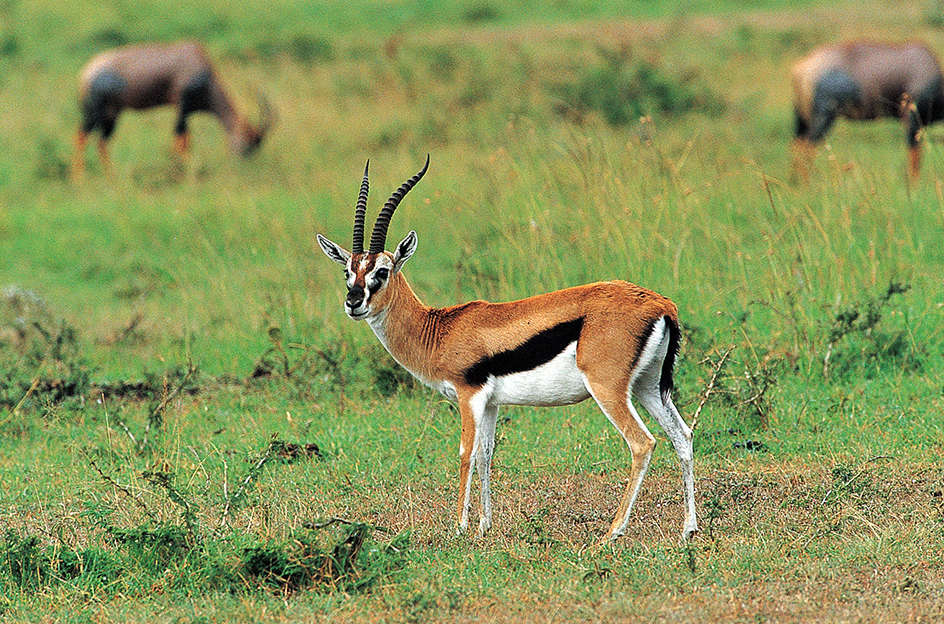Gazelle, << guh ZEHL, >> is the name for a number of slender, graceful antelopes. The different species (kinds) of gazelles live over a vast area of northern and eastern Africa and Asia. Some gazelles live in mountain ranges, but most of them inhabit open, sandy plains. Gazelles are gentle animals. The name gazelle comes from an Arabic word that means to be affectionate.
Gazelles have large, soft, black eyes. Both males and females of most species have round black horns. The horns of some types have ringlike ridges around them, but others are smooth. Usually the horns are U-shaped. Gazelles have long, narrow, pointed ears and short tails. Their hair is short and smooth. Some gazelles have tufts of hair on the knees. Thomson’s gazelle has a light fawn-colored back that deepens to a wide band of dark brown along the flanks. Its underside is pure white.

Gazelles are swift runners. Some gazelles can outrun even the swiftest greyhounds. Some hunters set snares or build enclosures near watering places to trap the animals when they come to drink.
Gazelles are plant-eating animals. The slender-horned gazelle lives in the northern Sahara and eats berries and leaves. It rarely needs to drink water. Instead, it gets water from dew and moisture in the plants it eats.
The well-known dorcas gazelle measures less than 2 feet (61 centimeters) in height. It lives in the desert from Morocco east to central India and south to Somalia, where the plants are sparse and scrubby.
Grant’s gazelle of eastern Africa has longer horns than any other gazelle. Gazelle horns usually grow 10 to 15 inches (25 to 38 centimeters) long, but those of Grant’s gazelle may grow 30 inches (76 centimeters) or longer. This animal stands about 33 inches (84 centimeters) high at the shoulder. It lives in herds of from 6 to as many as 200 animals. It eats grass and the leaves of shrubs. Grant’s gazelles often graze with hartebeests and zebras.
Several species of gazelles, including the slender-horned gazelle, are endangered. Goats and sheep eat most of the plant life in areas where these gazelles graze. Hunters who ignore game laws kill hundreds of gazelles every year. Conservationists claim that a total ban on gazelle hunting could save some species.
